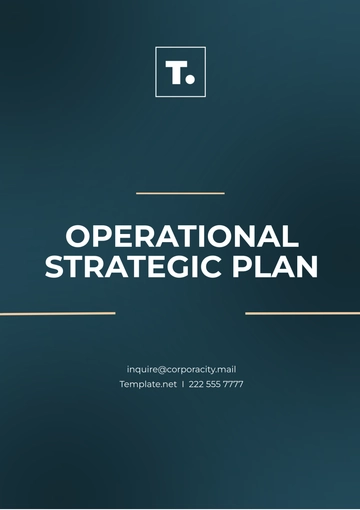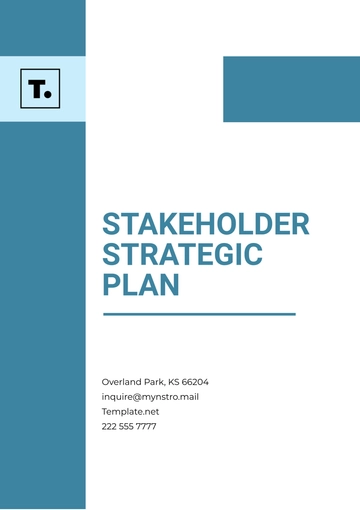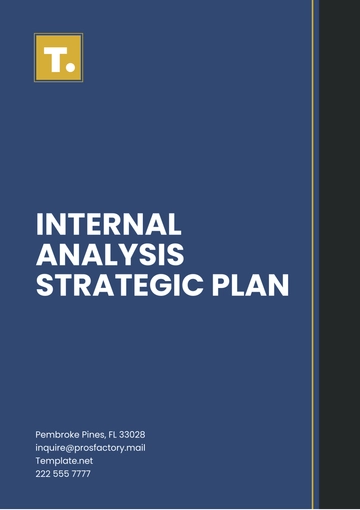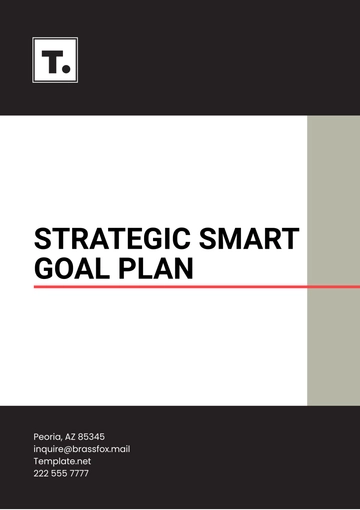Free Agile Growth Marketing Strategic Plan

Prepared by: [YOUR NAME]
Date: [DATE]
I. Introduction
This Agile Growth Marketing Strategic Plan outlines the dynamic and flexible approach to marketing that allows for rapid adaptation and responsiveness to market trends and consumer behaviors. This plan focuses on fostering sustainable growth through tactical strategies, efficient resource allocation, and data-driven decision-making processes.
II. Goals and Objectives
The primary objective of this marketing plan is to achieve measurable growth by enhancing brand awareness, increasing customer engagement, and maximizing return on investment (ROI). This will be accomplished through the implementation of agile marketing techniques that prioritize customer satisfaction and continuous improvement.
Enhance brand visibility by 30% within the next 12 months.
Increase customer engagement through targeted campaigns by 25% over the next 6 months.
Improve conversion rates by implementing A/B testing and personalization strategies.
Maximize ROI on marketing spend by 20% through efficient resource allocation and budget optimization.
III. Market Analysis
A. Industry Overview
The marketing landscape is rapidly evolving, with digital transformation at the forefront. This requires a strategic approach that leverages cutting-edge technology and data analytics to stay competitive. Understanding the market dynamics, consumer behavior trends, and technological advancements are crucial for achieving growth objectives.
B. Competitive Analysis
Analyzing competitors provides insights into their strengths and weaknesses, allowing for strategic positioning. Some key competitors include:
Competitor A: Known for innovative digital campaigns but lacks personalized customer experiences.
Competitor B: Strong in niche marketing but struggles with scaling operations.
Competitor C: Offers competitive pricing but has lower brand recognition.
IV. Target Audience
The target audience encompasses diverse demographics, including age, gender, and socioeconomic status. By segmenting the audience based on psychographics and behavior patterns, the plan will deliver tailored messages that resonate with specific consumer needs and preferences.
Audience Segmentation
Effective audience segmentation is imperative for creating relevant and impactful marketing campaigns. Key segments include:
Young professionals seeking innovative products and services.
Middle-income families prioritize value and quality.
Older consumers focused on reliability and customer service.
V. Strategic Implementation
A. Agile Marketing Framework
The Agile Marketing Framework emphasizes collaboration, flexibility, and speed. By breaking down large projects into manageable tasks, the team can rapidly adapt to changes and optimize campaign performance. The framework includes:
Sprint planning and execution cycles to maintain momentum and focus.
Cross-functional teams to enhance creativity and problem-solving capabilities.
Regular retrospectives to review performance and implement improvements.
B. Channel Strategy
A multi-channel strategy is crucial for maximizing reach and engagement. Channels will include:
Social Media: Leverage platforms like Facebook, Instagram, and LinkedIn for brand storytelling and community building.
Email Marketing: Implement personalized email campaigns to nurture leads and retain customers.
Content Marketing: Develop high-quality content to establish authority and drive organic traffic.
Paid Advertising: Utilize data-driven PPC campaigns to target high-converting audiences.
VI. Measurement and Evaluation
Measuring and evaluating the effectiveness of marketing campaigns is crucial for ensuring alignment with strategic goals. This involves tracking key performance indicators (KPIs) such as:
Metric | Definition | Goal |
|---|---|---|
Brand Awareness | Measure how well audiences recognize and remember the brand. | 30% increase within 12 months. |
Engagement Rate | Level of interaction users have with marketing campaigns. | 25% increase over 6 months. |
Conversion Rate | Percentage of users who take a desired action after engaging with marketing material. | Continuous improvement through testing and optimization. |
ROI | Measurement of the profitability of marketing activities. | 20% increase in ROI on marketing spend. |
VII. Conclusion
The Agile Growth Marketing Strategic Plan is designed to empower the marketing team to swiftly navigate the challenges of a dynamic environment while driving sustainable growth. By adhering to agile principles and focusing on data-driven decisions, this plan positions the brand for success through enhanced customer engagement and optimized marketing efficiency.
- 100% Customizable, free editor
- Access 1 Million+ Templates, photo’s & graphics
- Download or share as a template
- Click and replace photos, graphics, text, backgrounds
- Resize, crop, AI write & more
- Access advanced editor





























